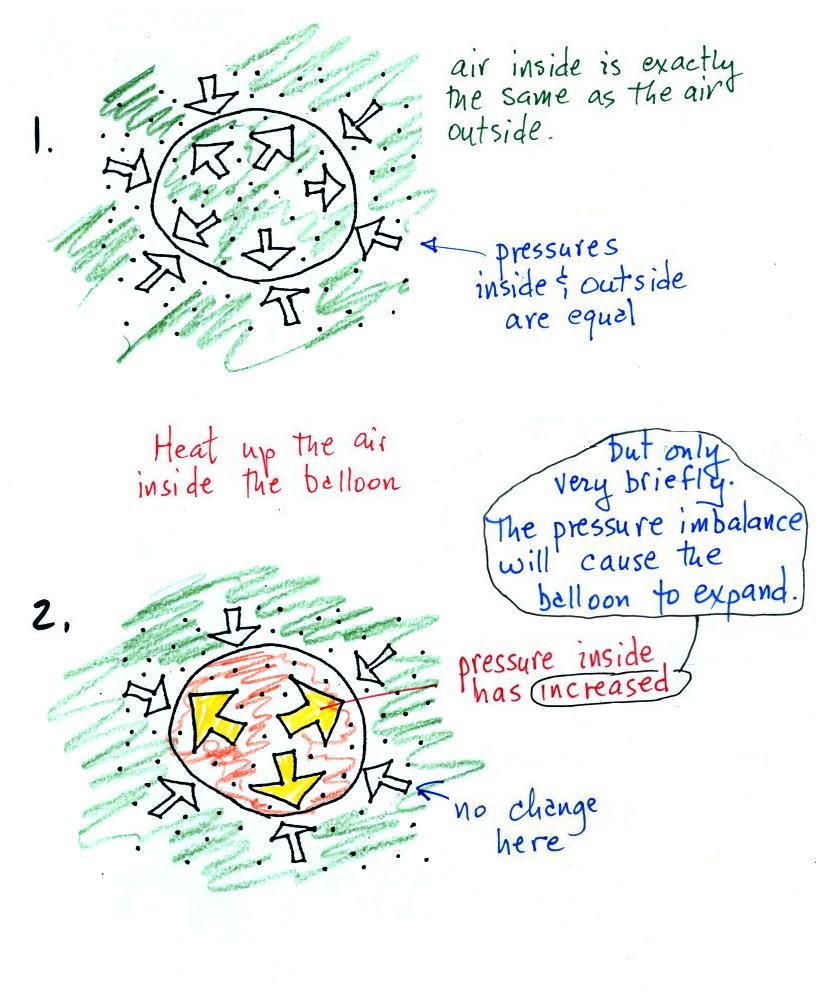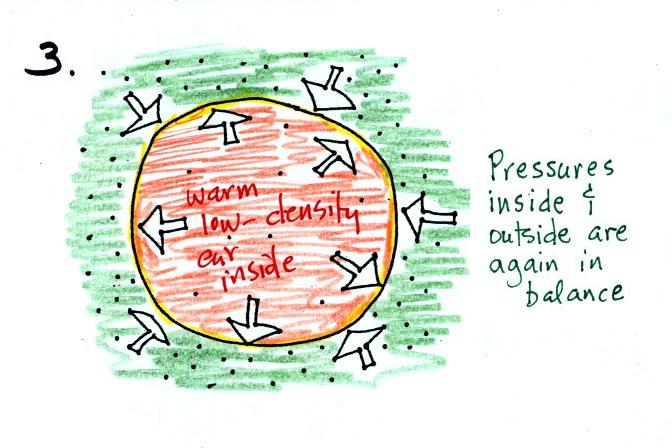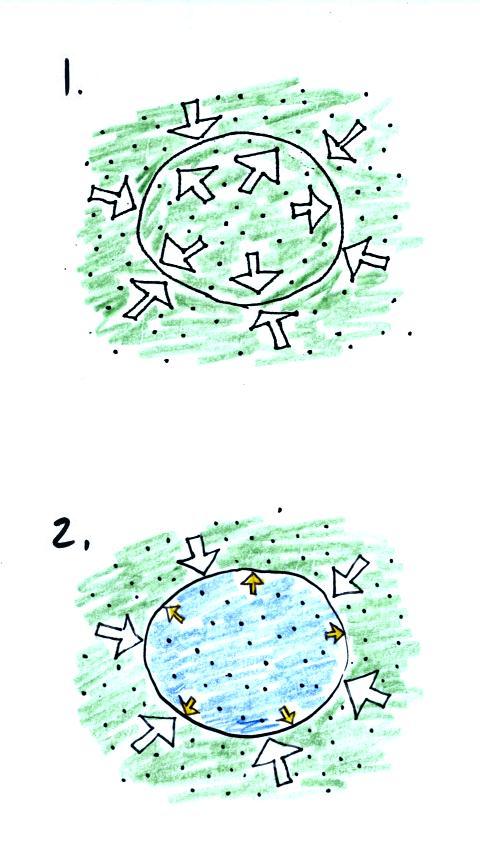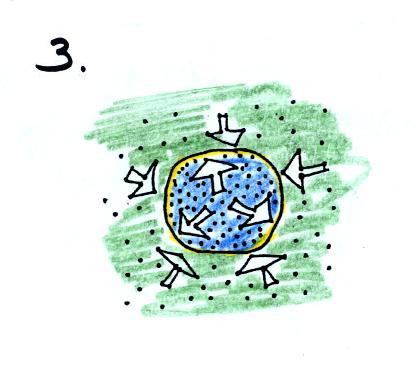Charles Law Step by Step
click here for a Microsoft
WORD document

Air in the atmosphere behaves like air in a
balloon. A
balloon can grow or shrink in size depending on the pressure of the air
inside. When a balloon isn't getting bigger or smaller it means
the force inside that is pushing out is balanced by the force outside
that is pushing in.
We start in the top figure with air inside a balloon that
is exactly the same as the air outside. The air inside and
outside have been colored green. The arrows show that the
pressure of the air inside pushing outward and the pressure of
the air surrounding the balloon pushing inward are all the same
strength.
Next we warm the air in the balloon (Fig. 2). The ideal gas law
equation
tells us that the pressure of the air
in the balloon will increase. The increase is
momentary though.
Because the pressure inside is now greater (the big yellow arrows) than
the pressure outside, the balloon will expand. As volume begins
to increase, the pressure of the air inside the balloon will
decrease.
Eventually the balloon will expand just enough that the pressures
inside and
outside are again in balance. You end up with a balloon of warm
low density air that has the same pressure as the air surrounding it
(Fig. 3)

You can use the same reasoning to understand what happens when you cool
the air in a balloon.
The air inside and outside are the same in Fig. 1. Cooling
the
air inside the balloon in Fig. 2 causes a momentary drop in the inside
pressure (small yellow colored arrows) and creates a pressure
imbalance. The stronger outside air
pressure compresses the balloon.
As the balloon volume decreases, pressure inside the balloon
increases. It eventually is able to balance the outside air
pressure. You end up with a balloon filled with cold high
density air.




